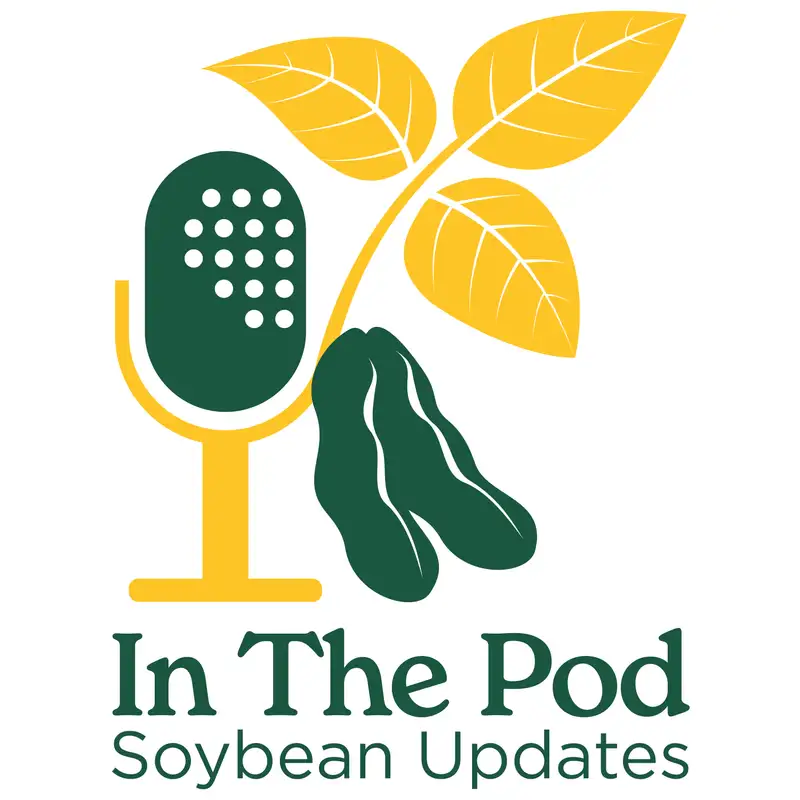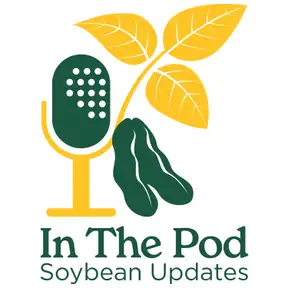08/21/25 From Pods to Predators: Insects in the Soybean Canopy
You're listening to In The Pod, soybean updates, a weekly trek into the latest soybean information from NDSU Extension. Soybean aphids are on the move, but is this good or bad news? Jan Knodel, NDSU Extension entomologist, will fill us in. Jan, what kind of soybean aphid numbers are you seeing from the NDSU IPM survey?
Jan Knodel:Well, we've been scouting soybean fields, and this year we scouted a total of three ninety five soybean fields in North Dakota, and about 16% of the fields that were scouted had soybean aphids in them, and we had anywhere from five to 100% incidence. The average number of aphids per plant ranged from one to four zero six with an overall average of 25 soybean aphids per plant. The top two spots were the Northeast area Grand Forks, Walsh, Cavalier Counties and the Southeast area, Richland County.
Bruce Sundeen:Now that the soybeans are maturing, what needs to be done with the aphids?
Jan Knodel:Well, you need to continue to scout until the soybean at least reaches the R6 whole seed stage. You know, it's pretty uncommon in North Dakota to see an economic population of soybean aphids then, but you need very high numbers and the plants will probably need to be stressed by drought before we'll see any yield loss at that stage. But the aphids are moving down now to the lower mid canopy. If you're out there scouting some fields in a late season here, be sure you look at that lower to middle canopy for the aphids. And the soybean aphids do follow the nutrient flow that's you know moving to the developing pods right now. We've still seen soybean aphids in many fields but their populations are low, well below the threshold, And this is probably due to some of the summer thunderstorms we have that washes them off the plant. And we've also noticed many beneficial insects out there that feed on soybean aphids.
Bruce Sundeen:Jan, what other insects are affecting soybeans?
Jan Knodel:We're seeing a lot of common predators that eat aphids, lady beetles, adults and larvae, green lacewing larvae, and syrphid fly larvae. We're also seeing some parasitized soybean aphids called mummies and these are parasitized by a tiny wasp and we found that they were in about 5% of the fields at 10 to 25% parasitism. The mummies will look brown or black and they don't move around on the plant but otherwise they kind of look like a soybean aphid. And we're also seeing some aphids that are infected with fungal diseases and they're very discolored looking and have a fuzzy look for them. Another thing we're seeing is the white dwarf soybean aphids and they're mainly found on the lower soybean foliage. They're cream colored and smaller than the normal soybean aphid. White dwarf soybean aphids have a reduced reproductive rate about 70% and a shorter lifespan. So it's essential to include these white dwarfs in your total plant counts, but you need to also consider their presence whether you know it's worthwhile spraying or not. We believe the white dwarf aphids are more susceptible to predators and parasitoids as well. And the last thing I should mention is we're just starting to see winged soybean aphids on the soybean plants. These winged aphids will migrate back to their overwintering host, Buckthorn, where they will be both male and female. They'll mate and then lay eggs, and they'll overwinter in the egg stage. This migration is being triggered by the shortening day length and the onset of soybean maturity, which is signaling the end of the growing season.
Bruce Sundeen:Thanks, Jan. Our guest has been Jan Knodel, NDSU Extension Entomologist. You're listening to In the Pod Soybean Updates, a weekly trek into the latest soybean information from NDSU Extension supported by the North Dakota Soybean Council.

